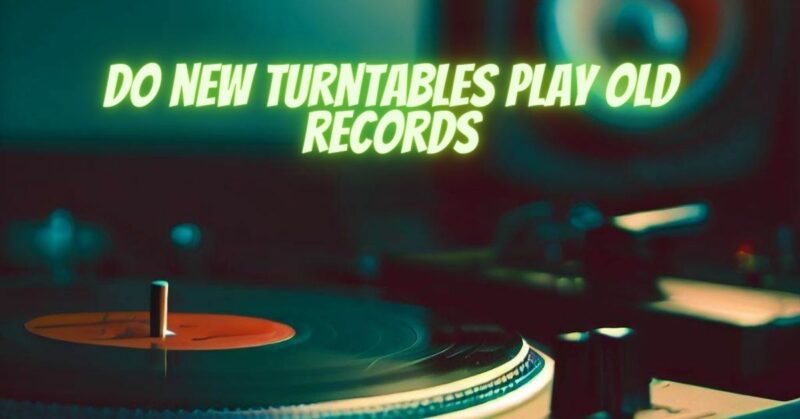As vinyl records experience a resurgence in popularity, many music enthusiasts are rediscovering the charm and warmth of analog sound. With the renewed interest in vinyl, questions arise about the compatibility of new turntables with old records. Can modern turntables effectively play vintage vinyl, or do they require specific adjustments? In this article, we explore the compatibility between new turntables and old records, providing insights into how to enjoy your treasured vinyl collection on a contemporary turntable.
1. Compatibility Across Generations: The good news for vinyl lovers is that new turntables are designed to be compatible with both old and new vinyl records. The basic principles of vinyl playback have remained consistent over the years, making most records universally playable on modern turntables.
2. Standard Record Sizes: The majority of vinyl records, both old and new, follow standard sizes: 12-inch LPs (long-playing records), 7-inch singles, and 10-inch records. New turntables are equipped to accommodate these standard sizes, allowing for seamless playback without any issues.
3. Playback Speeds: Old vinyl records are typically designed to play at three main speeds: 33 1/3 revolutions per minute (RPM) for LPs, 45 RPM for singles, and 78 RPM for older shellac records. Most modern turntables have adjustable speed settings, ensuring that you can set the correct RPM for the corresponding record you’re playing.
4. Compatibility with 78 RPM Records: It’s important to note that not all new turntables support 78 RPM playback. While many turntables offer 33 1/3 and 45 RPM options, 78 RPM playback might require a specialized turntable or an additional stylus/cartridge designed specifically for these older shellac records.
5. Cartridge and Stylus Compatibility: The compatibility between turntables and vinyl records is also influenced by the cartridge and stylus used. Some vintage records may have been played on heavier tracking cartridges, and modern turntables may use more lightweight cartridges. This difference in tracking force can potentially impact playback quality and wear on the vinyl. However, modern turntables often allow for cartridge upgrades, which can provide more flexibility and tailor the setup to suit both old and new records.
6. Proper Maintenance and Handling: To ensure optimal playback of old records on a new turntable, it’s crucial to maintain and handle both the records and turntable with care. Clean your vintage records thoroughly to remove any dust or debris that might affect sound quality. Additionally, ensure that your turntable’s tonearm, stylus, and cartridge are properly aligned and calibrated to minimize wear on the records and optimize sound reproduction.
In the delightful world of vinyl, new turntables and old records coexist harmoniously. The compatibility between new turntables and vintage vinyl is generally straightforward, thanks to the standardization of record sizes and playback speeds. While certain considerations, such as 78 RPM playback and cartridge compatibility, may require attention, most modern turntables are designed with the versatility to cater to a wide range of vinyl records.
So, whether you’re curating a collection of vintage gems or exploring the latest vinyl releases, your new turntable can unlock the melodic past, allowing you to revel in the timeless beauty of analog sound and create cherished musical memories that bridge generations. Happy spinning!


